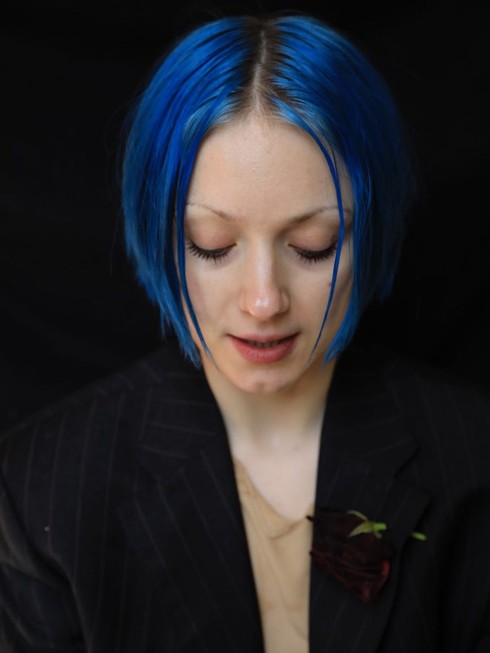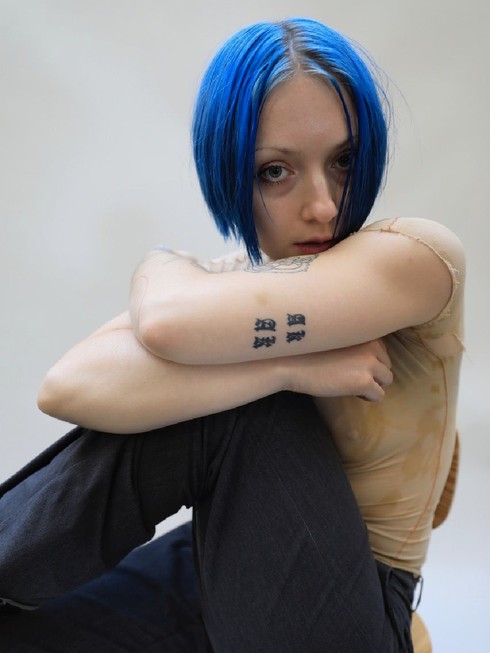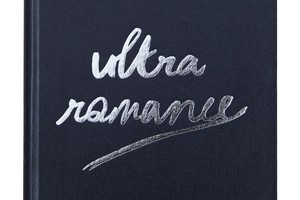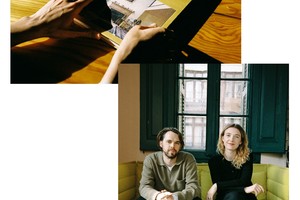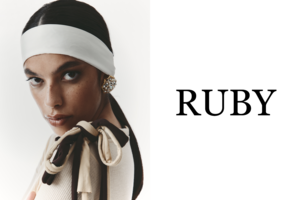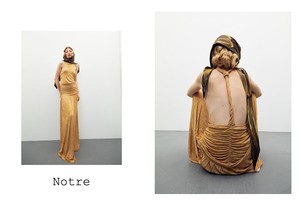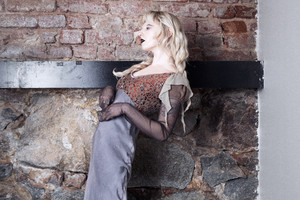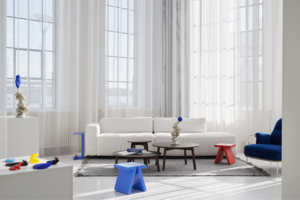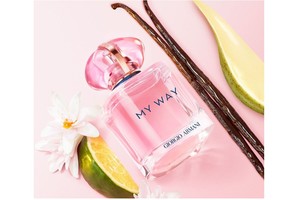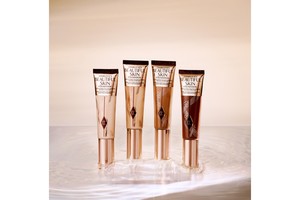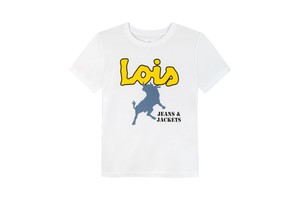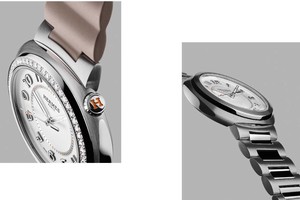Interview with Adele Marcia Kosman
Written by Alicia Hurst by AliciaSwedish composer Adele Marcia Kosman unveils a world of emotion on her debut album, “VOLVM 2. pieces.” Through dissected voice, pump organ performances, and algorithmic synthesis, Kosman explores the delicate dance of pleasure, disruption, and persistence in time. Drawing from diverse experiences, her music offers a brief yet immersive journey into a realm of emotional depth and subtle revelation.
Your album, VOLVM 2. pieces, features a blend of intimate, raw emotions and digitally manipulated sounds. Can you share personal experiences from your life, such as those in “Closer to Trust,” inspire these elements in your music?
It is truly challenging to derive the origin of an idea or inspiration. I highly rely on intuition when composing and the many different musical circumstances and periods of my life effortlessly resurface when needed and when relevant, and I remain ignorant to whythis relevance occurs. With that said, the tools I use certainly dictate the music to a large degree. The pump organ landed in my possession by chance and has influenced the album deeply. The summer of 2021 we built a studio in my family’s summer house and I was on the lookout for a small piano. Suddenly this cute organ pops up in the Facebook-page of the village. Its sensitive fluctuations in dynamics and the rhythmic aspect of the pumping has allowed me to find new sounds and expressions in my vocal performance and I believe this also heightened the raw sensation of the album immensely.
The digital processing, as an aesthetic, ie. Beyond mixing and effects,comes from an urge to dissect sounds – hoping to find hidden treasures.“if it were for me you’d piece me up” is a good example of this tendency and also shows how the tools at hand shapes the end result. I also love clicks and pops!
With your background as a back-end developer and experiences in major-label-signed electronic pop, how have these diverse influences shaped your creative process, particularly in crafting the unique sound found in VOLVM 2. pieces?
I would first of all like to say that the major-label electronic pop allowed me to become a musician. Before For BDK was signed I had no faith in pursuing a musical career. A naivety in me was born in thatsigning moment and it has since served me well. The naive dream of stardom and fame gives me so much energy and will. A side note is that studies in composition allowed me to do computer development. It’s all intertwined, like it should.
Moreover, I had a wish to mix and merge the different sonic tendencies Ihave. The sparse and live-recorded on one hand, the heavily processed on the other, and perhaps a few instances in between. Perhaps this is something significant to the record. My intention with this has something to do with sincerity. These are the most beautiful tracks I have made in the past few years and they belong together.I won’t keep anything from you! I promise!
Your music explores recurring themes and leitmotifs. Do any of these draw directly from personal experiences, and how do they contribute to the overall narrative of VOLVM 2. pieces?
As many, I find it easier to compose when starting off with a little seed of sound. So, you borrow excerpts from previous works. Sometimes the resemblance of its origin is lost along the way, and other times the resemblance works to tie a story (album) together. Apart from this, ever so often you write something which has a huge potential, and I'm sure to make use of this.
Lyrically the album is strictly personal. All texts are from diary notes. Many of these diary entries were written in the aftermath of separation. In the ebb and flow of grief, emergence of new dreams and wishes, reconciliation and all the things.
The dualistic nature of your vocals from intimate to abstract suggests a personal touch. How do your own emotions and experiences influence the way you choose to sing, especially in songs like “Always” and “If ItWere For Me You’d Piece Me Up”?
The dualistic nature of the album has a somewhat practical origin. How Lust and practicality impact decisions, particularly when years of movements of lust are accounted for.
“if it were for me you’d piece me up” I wrote during my studies in composition. I wished to deepen my artistic practice beyond the voice.At the same time – the voice is my main instrument. I used recordings from earlier live concerts of mine and put my voice to good use, with new tools.
Graduating The Royal College of Music I was again longing for the fragility and corporal aspects of vocal performance. Not unrelated to my degree project where I dwelled into the topic of liveness and how this can (should) be incorporated in a concert of electronic nature.
In your role as a stylist and model, how does your identity in these fields intersect with or influence your musical identity? Are there moments where your work in one realm directly informs the other?
Today, I am a composer and artist. The time I spend with shape and form,clothes and expression, is to aid a musical expression. Music is the beginning and end!
Reflecting on your electroacoustic academic endeavors, can you share a specific concept or discovery that significantly impacted your artistic perspective and found its way into your music?
We have already mentioned “if it were for me you’d piece me up” a few times and I find it necessary to do so again. This piece is the oldest track of the album and at the time of birth it evoked a new musical era.I set off to expand on the use of voice and to generally explore new techniques of processing recorded sounds. My exploration led me to databending and glitch. Damaging the source code of an audio file is one way to perform data bending, it is a tedious process but it brought about the most interesting and surprising variations to the motif of the piece. In the track I also explored the simple mechanism of using a gate with a side chain. This basically allows one sound to affect the volume of another sound. This is a technique that I often use and it’s easily spotted in “Intro: Unusually Lost Bits.”
As a rising artist from Stockholm’s experimental music scene, how has the local community influenced your growth, and are there collaborations or interactions that have been particularly impactful for your creative journey in VOLVM 2. pieces?
I am very happy for this question! The collaborations on this album are life-changing for me. It has also emphasized the concept of collaborations itself. Working together makes everything more fun, and to be honest – making music is not fun. It is seriously difficult and exhausting and heartbreaking. Ah! But! Together! Fabian Grytt mixed the album and is also featured on one track, “always.” Our discussions leading up to the mixing and his investment in the music has been more than I could ever dream of. It has been the most precious thing to digdeep and write and then to thoroughly, sometimes, slaughter the music with Fabian and see it grow far beyond my initial intention.
In the process of working with the album we decided to start a record label of which my album would be the first release. This has also been incredibly FUN! Arvid Kraft and Anton Berglund I studied together with at the Royal College of Music, and Saga Fagerström I know via the two.The four of us run Echo & Altar Records. Sharing this with my dear friends makes it all deeply meaningful, and that’s what it's all about.
Link to VOLVM 2

